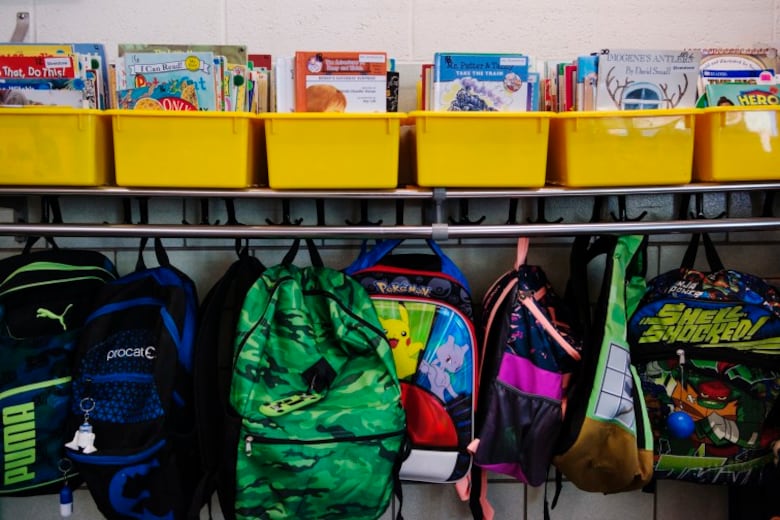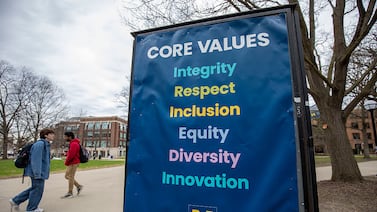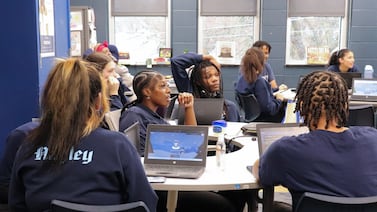Starting this fall, New York City will no longer test rising kindergartners for entry into its gifted and talented program, which has long attracted controversy for enrolling starkly low numbers of Black and Latino students.
Instead of having a specific gifted program sorting a small number of children, all kindergarten students attending the city’s 800 elementary schools next September will receive “accelerated” instruction, city officials said Friday. Starting in third grade, all students will be screened to determine if they should continue to receive accelerated instruction in specific subjects.
“The era of judging 4-year-olds based on a single test is over,” Mayor Bill de Blasio said in a statement. “Every New York City child deserves to reach their full potential, and this new, equitable model gives them that chance.”
At least, that’s the mayor’s plan. It is an open question whether the changes will ultimately get implemented.
De Blasio has about three months left in his term and Democratic candidate Eric Adams is widely expected to replace him. Adams has offered a much different vision for the coveted gifted programs, proposing instead to keep the admissions test and add more gifted classrooms in communities across the city.
On Friday, a spokesperson for Adams said he would act independently, if elected.
“Eric will assess the plan and reserves his right to implement policies based on the needs of students and parents, should he become mayor,” said Adams campaign spokesperson Evan Thies. “Clearly the department of education must improve outcomes for children from lower-income areas.”
Current landscape
Under de Blasio’s proposal, children currently in gifted classes will continue in the program until they finish elementary school. City officials did not immediately say what will happen with the five citywide gifted schools, like Anderson and Nest+m, which enroll only children who have tested into the current gifted program.
Currently, about 2,500 kindergartners a year score seats in 80 schools to the highly selective program, with many families — with and without means — spending time and money to prep their preschoolers for the exam. Many advocates and parents have blasted the test, which is administered one-on-one to children when they’re about 4, for resulting in a system that largely excludes Black and Latino students. They fill only 14% of gifted seats, but make up nearly 60% of kindergartners citywide.
Meanwhile, more than 70% of gifted seats go to Asian American and white students, who make up less than a third of the city’s overall student population.
The classrooms are segregated in other ways. Just over a quarter of students come from low-income families, compared with almost 70% citywide. There are few students with disabilities or who are learning English as a new language in gifted classrooms.
Proposed changes
Under the new model, the city would train roughly 4,000 teachers and hire additional teachers already versed in accelerated learning to work in neighborhoods with historically little to no gifted programming, city officials said Friday. The new program, called Brilliant NYC, would start in the fall of 2022 and be phased into first and second grade the following years.
Third graders who have been screened for accelerated instruction in certain subjects would remain in general education classes, but might be pulled out for small group work or given additional assignments tackling real-world problems using robotics, coding, or community organizing. Keeping children in mixed classrooms would solve an issue currently seen in many schools with gifted programs, where classrooms within the same school building are racially segregated.
Officials did not specify how third graders would be screened — which could be crucial when it comes to creating a program that is more representative of the city’s enrollment.
Why it might — or might not — work
Frank Worrell, a professor of education and psychology at the University of California, Berkeley, said it’s encouraging that the city is proposing to do away with a single test for admissions, opting instead for a program that provides “universal access.”
That could help catch up students who enter school behind their peers, and put those children on a more level playing field when it comes time to select students for differentiated programs.
“If this is done well, what that should do is actually help those who in fact are coming from less resourced environments, environments with less education capital — but who have tremendous potential — to realize that potential before they are then doing the screening,” he said.
Worrell said that the shift would likely require more, well-qualified teachers in the classroom.
“You need an adult-rich environment. Curriculum is necessary but not sufficient. You need the individuals who understand differentiation,” he said.
Doing away with separate classes is likely a hard sell for parents, especially in New York City. No other school system screens as much, with entire schools reserved for students based on their prior academic record.
“I don’t see how it will work to have an accelerated program for all kindergarten students. Some children know how to read entering kindergarten. Some know how to do their math. Some don’t,” said Lila Benayoun, a Manhattan mom of four. Three of her children (kindergarten, first and third grade) attend NEST+m on the Lower East Side, her other first grader is in a gifted program housed at Chelsea’s P.S. 33.
Even within the gifted program, she sees disparities in the level of performance expected. At NEST+m, which required a top score on the test for admittance, her first grade son has more tests and higher expectations set by the school than in his twin sister’s gifted class. She’s not getting grades and only has weekly spelling tests, her mom said.
Scott Peters, a professor at the University of Wisconsin-Whitewater who studies gifted education, said that school systems like New York City’s have to strike a balance: to create more opportunities for students who are currently missing out, while ensuring that other parents don’t feel like a benefit is being taken away from their own children.
“You have to be able to document how their kid, with their level of readiness...how they’re going to have their needs met in the new paradigm,” he said. “Too often, there’s waving of hands, or, ‘Yeah, yeah the teacher is going to take care of that,’ and that is not convincing to parents.”
Halley Potter, a senior fellow at the left-leaning think tank The Century Foundation who has studied New York City’s gifted programs, offered a more optimistic take. She thought the city’s plan for training teachers “feels doable” since it focuses on a single grade per year.
City officials said they would hire seven borough-wide teams of experts to help guide schools.
Politically explosive
Changes have been politically explosive and slow-coming. After appointing a task force in 2017 to propose ways to better integrate New York City schools, which are among the most segregated in the country, de Blasio spent the last years of his tenure ignoring recommendations for sweeping reforms for gifted programs.
The programs are often seen as a way to keep middle class and white families in the public school system. Meanwhile, many Asian American families and other parents of color rely on them as a ticket to higher-performing schools that are often in short supply in their neighborhoods.
The COVID pandemic forced major, but temporary changes last year. In a surprise vote, and a major sting to the mayor, the Panel for Educational Policy rejected a contract that would have allowed the city to continue testing for gifted admissions.
Officials were left scrambling to set up a new selection system, ultimately deciding to allow parents and teachers to nominate students and then assign seats based on a lottery.
The city has not shared figures on whether that resulted in a more representative group of students being admitted or accepting their slots in the program.
Far from certain
Unveiling the plan on Friday, the mayor and chancellor referred to it as a “blueprint” that could change based on community feedback. They promised to roll out an “engagement plan” in every school district.
“This is an absolutely coherent, full plan. We’re going to go out for two months and get input from communities and perfect it and revise it accordingly,” de Blasio said Friday on WNYC public radio.
The listening sessions are slated to wrap up in November — when the city heads to the polls to select its next leader. That leaves the incoming mayor to decide whether and how to implement any reform.
It seems clear, however, that admissions will be upended for a second year in a row. Without a testing contract in place, it would be difficult to go back to the old system in time for rising kindergartners.
Applications for this year’s incoming kindergartners were due on Jan 22. By that time next year, a new mayor will already be in office, sworn in on Jan. 1.
Amy Zimmer contributed reporting.






